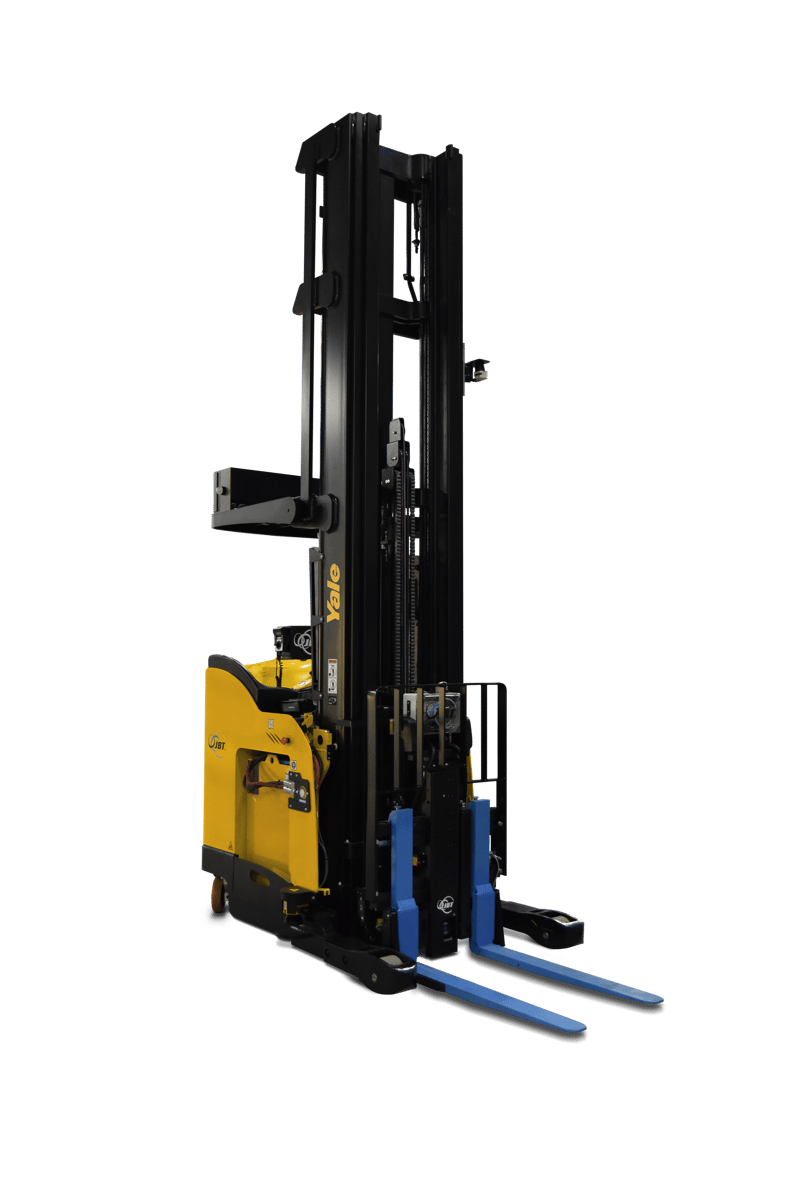
Yale Robotic Reach Truck wins Gold Edison Award
Yale Materials Handling Corporation announces the company’s first Edison Award, taking home gold in the autonomous work solutions category with its robotic reach truck. A panel of over 3,000 executives from around the world recognized the Yale®robotic reach truck for its use of innovative technology to expand the capability of lift truck-based robotics and address key business challenges facing warehousing and logistics operations.
 The ability to lift as high as 30 feet and reach into double-deep storage locations separates the robotic reach truck from other entries in the category and enables operations to automate new processes beyond floor-level, point-to-point transportation. In addition to the LiDAR-based navigation technology used in other Yale robotic solutions, the robotic reach truck uses a combination of 3D cameras and sensors to perceive its surroundings and perform at height.
The ability to lift as high as 30 feet and reach into double-deep storage locations separates the robotic reach truck from other entries in the category and enables operations to automate new processes beyond floor-level, point-to-point transportation. In addition to the LiDAR-based navigation technology used in other Yale robotic solutions, the robotic reach truck uses a combination of 3D cameras and sensors to perceive its surroundings and perform at height.

Mick McCormick
“These awards honor Thomas Edison’s emphasis on innovations with practical value, from the incandescent light bulb to improvements to the telephone,” says Mick McCormick, Director, Robotics and Automation, Yale Materials Handling Corporation. “The robotic reach truck shares this philosophy, specifically designed to address major challenges facing supply chains like sourcing and retaining labor, finding space for growing inventories and rising commercial real estate costs.”
With consumers demanding a wide range of items for fast delivery, businesses must manage large inventories in close proximity to population centers for fast delivery. The unique high-lifting ability of the robotic reach truck helps operations maximize existing space and avoid costly new construction or expansion.
The robotic reach truck also helps ease the strain on logistics operations to keep hiring and re-training workers for repetitive, turnover-prone positions. Since they are standard Yale® lift trucks outfitted with robotic technology, the same personnel can service both standard and robotic fleets, avoiding the need to train new personnel or call in specialists.









